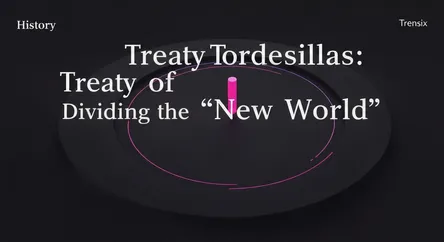History
Treaty of Tordesillas: Dividing the "New World"

An explanation of the 1494 agreement between Spain and Portugal that divided the newly discovered lands outside of Europe between them.
What is it?
The Treaty of Tordesillas was an agreement signed on June 7, 1494, between the Catholic Monarchs of Spain and the King of Portugal. It aimed to settle conflicts over newly discovered lands by Christopher Columbus and other voyagers. The treaty established a line of demarcation, a meridian 370 leagues west of the Cape Verde islands. All lands to the west of this line were claimed by Spain, while all lands to the east were claimed by Portugal. This agreement effectively divided the "New World" and other undiscovered lands into two exclusive spheres of influence.
Why is it trending?
The Treaty of Tordesillas is a pivotal event in history, fundamental to understanding the Age of Discovery and the subsequent colonization of the Americas. It highlights the immense geopolitical power of the Papacy at the time, as Pope Alexander VI had issued earlier bulls influencing the division. The treaty is also significant for its direct impact on the map of South America, most notably granting Portugal its claim to Brazil, which fell east of the demarcation line. It set a precedent for how European powers would claim and divide territories around the globe.
How does it affect people?
The treaty had a profound and lasting impact on the world. For the indigenous peoples of the Americas, it legitimized Spanish and Portuguese conquest and colonization, leading to the exploitation and subjugation of native populations. The agreement shaped the linguistic and cultural landscapes of North and South America, which is why Portuguese is spoken in Brazil while Spanish is spoken in most of the surrounding countries. It also excluded other European powers from the Americas for a time, though they would later challenge this division, leading to further conflicts and colonial expansion.